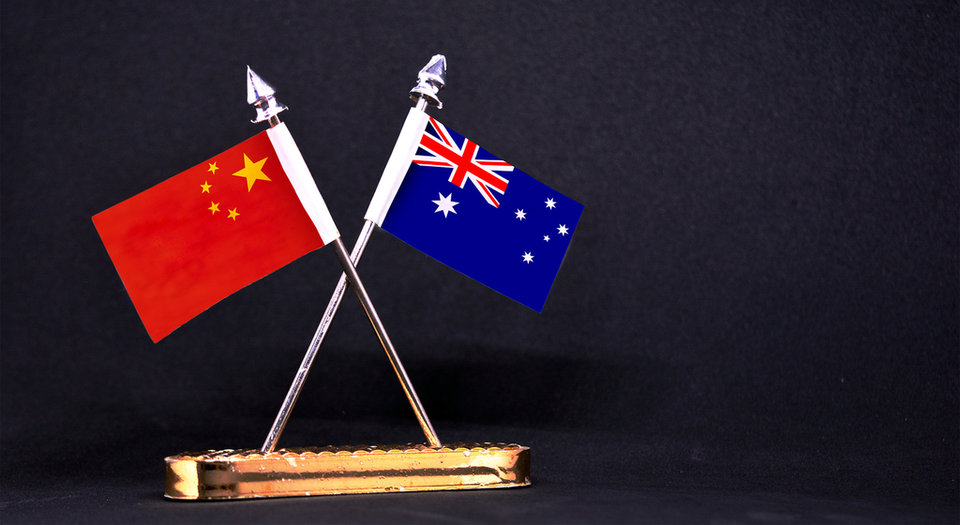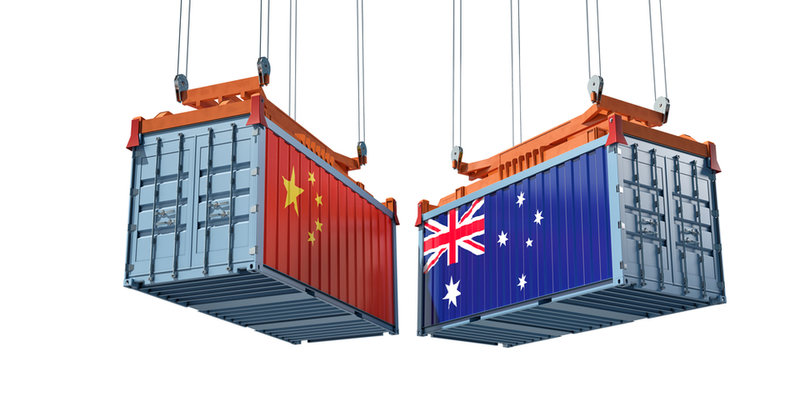
TRADE
The business of bilateralism
Following the signing of the Regional Comprehensive Economic Partnership, a giant trade deal consisting of 15 ASEAN nations including Australia, New Zealand, China, Japan, and South Korea, BHP's chief executive has emphasised the importance of strengthening bilateral ties. Scarlett Evans examines the deal and how mining fits into such trade agreements.
T
rade tensions between China and Australia have, in recent months, grown to a point of significant concern. The former’s implementation of tariffs against a growing list of Australian exports have sparked a certain level of unease at what goods will be targeted next, and there doesn’t seem to be an end in sight.
Figures from the Department of Foreign Affairs and Trade indicate that exports of goods and services to China make up around 7% of Australia’s gross domestic product. WIth this in mind, the maintenance of a good relationship is a must for many.
In 2019, WeForum reported that in terms of purchasing power parity, Asian economies are set to become larger than the rest of the world combined for the first time since the 19th century. Joining a stable trading bloc for these regions is therefore a wise move in securing Australia’s place at the table, though doubts remain over just how much the latest agreement can achieve.
At its best, the Regional Comprehensive Economic Partnership (RCEP) is a means of stabilising development in the post-Covid-19 rebuild, at its worst it is merely paying lip service to improving bilateral relations. Opinion is divided on which side will bear fruit, and questions remain over what Australia will do if mining is next in the tariff firing line.
As good as it seems?
When it comes to aligning itself with the ASEAN nations’ rising economies, Australia’s place in RCEP is seen by many as an economically savvy move.
“RCEP will support regional economic integration among member countries and could lead to an increase in GDP of the trading bloc by 0.4% by 2030,” says Dan Tehan, Australia’s minister for trade, tourism, and investment. “Regional economic growth will also increase opportunities in the Mining Equipment, Technology and Services sector.”
Prime Minister Scott Morrison labelled the agreement ‘crucial’ as Australia rebuilds after the pandemic, and given the fact that the participating Asian countries make up nearly 30% of global GDP, the benefit of Australia strengthening its ties with the nations is not insignificant.
“This is the most dynamic region in the world,” says Professor James Laurenceson, director of the Australia-China Relations Institute at the University of Technology Sydney.
“If you look at China's economic growth numbers, its economy grew by 2.3% last year. Every single other major economy in the world; the US, the European Union, went backwards. So for this agreement to help better integrate this region with Australia, I think it’s absolutely a positive.”
Every single other major economy in the world; the US, the European Union, went backwards.
Yet holes have been pierced in the deal, due in part to its exclusion of many environmental concerns - causing some to label it as a ‘shallow’ arrangement. Yun Jiang, editor of the China Story blog at the Australian National University, says that there is some criticism of RCEP for not being as ‘high quality’ as some other trade agreements (such as the Comprehensive and Progressive Agreement for Trans-Pacific Partnership).
“The EU is very, very big on labour and environmental standards, in that when they negotiate their trade agreements that's what they really emphasise,” she says.
“That's not something that developing countries really focus on - they are often more concerned with economic growth. While environmental policies can drive development, they are often seen by many as an impediment to growth.”
Others warn the deal will not remedy bubbling tensions with China, which have thus far seen tariffs targeting Australian wine, barley, and beef.
Australia-China relations
“The disagreement between China and Australia is not just about trade, it’s about the broader bilateral relationship,” says Jiang. “Trade is merely an instrument for China to impose costs on Australia.”
Although the deal is not expected to alter existing tariffs and trade pressures, it showcases the importance of mining in keeping ties between the two nations. In this sector at least, they need each other.
China has not been willing to completely shoot itself in the foot to punish Australia for political differences.
“In the Australia-China case, the fact that the mining trade continues at pace even amidst these political tensions, is something that is keeping the broader relationship together,” says Laurenceson. “Just last week, we found out that China's share of Australia's total goods exports actually hit a record high - China now boasts 40% of our total goods exports internationally.
“The reason for that, of course, is not politics, it's economics. Australia provides a good quality product for a good price, so China has not been willing to completely shoot itself in the foot to punish Australia for political differences.”
So what happens if mining is in jeopardy? While coal has already been something of a casualty in the trade war, iron ore is really the keystone in the relationship.
Figures from the Department of Foreign Affairs and Trade say that the mineral is the largest export for Australia to China, representing around 40% of the $153bn worth of goods sent every year.
Whilst it is widely agreed this market is unlikely to suffer in the near future, the hits taken by non-mineral exports thus far have been something of an opportunity to consider the problems that arise when goods are weaponised.

An untouchable trade?
Dr Nicholas Fearnley, project manager of Australian mining, engineering construction, and maintenance forecasts at BIS Oxford Economics, says that mining exports face relatively lower risks than other export categories (such as non-food rural goods), due predominantly to the ‘lack of alternative supply’.
“Australia accounts for over half of global iron ore exports, and China accounts for over half of global iron ore imports,” he says. “Brazil is the second largest exporter and their supply has been weak for over a year now, due first to the tragic tailings dam disaster, but then poor weather, and more recently Covid-19.
“We expect Brazilian supply to normalise, which will help reduce Chinese dependence on Australian iron ore. However, even after Brazilian supply normalises, Australia will be the largest global exporter by a big margin.”
Looking further ahead however, demand for iron ore is expected to decline as China moves to alternative options - in the form of both other iron ore markets and the production of their own greener materials.
Australia accounts for over half of global iron ore exports, and China accounts for over half of global iron ore imports.
“Longer term, we expect two factors to reduce Chinese dependence on Australian iron ore,” Fearnley says. “The first is the development of mines outside Australia; for example, the Simandou deposit in Guinea. The second is an increased use of electric arc furnaces in China, which is effectively steel recycling.”
While these are long-term factors, it is not a topic to be ignored. As the world at large turns its attention to greener, sometimes domestically-sourced solutions, some have floated the need for Australia to broaden its marketing horizons - though it’s not a simple request.
“It would be great if we could find new markets,” says Jiang. “But the fact of the matter is China is often the most dominant market, and the only way we could diversify is to reduce trade with them - something that would impose a significant cost on the Australian economy.”
There is no one hard and fast solution, but RCEP is hopefully an indication of Australia’s continued alignment with what is fast becoming the world’s largest economy. With a continued focus on the regional development opportunities from the deal and an eye on emerging markets, Australia’s minerals future could still be bright.
// Main image: 3D System Model and Completed Installation. Credit: Deimos